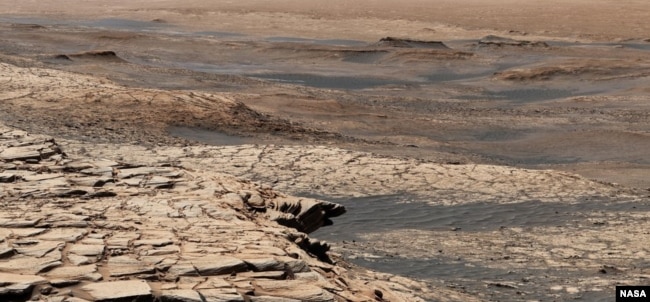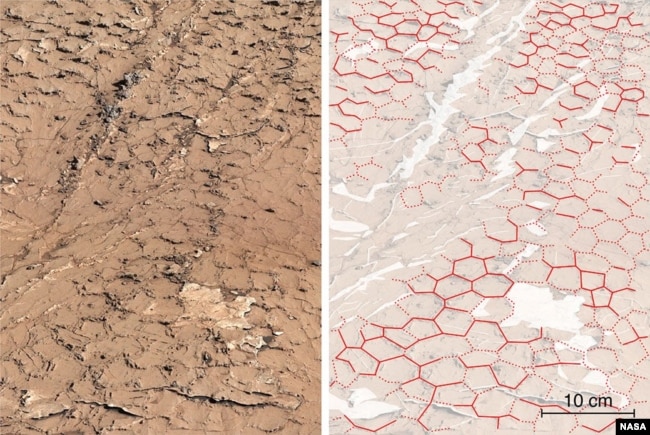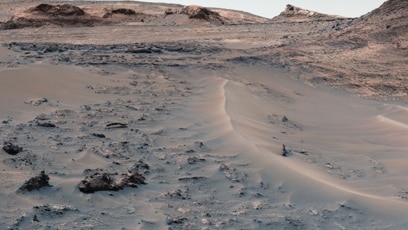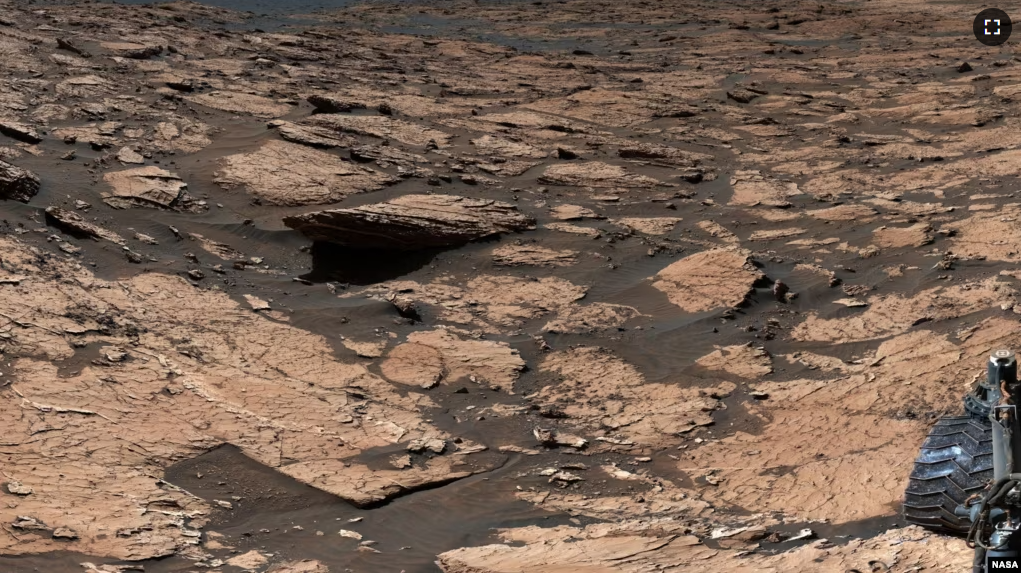Researchers say they have found evidence that ancient Mars experienced both wet and dry climate cycles.
The new evidence is based on data collected by an exploring vehicle on Mars, called Curiosity. The explorer, or rover, is operated by the American space agency NASA.
Scientists say the finding suggests Mars may have once held the right conditions to support life. They describe their findings in a study appearing this month in the publication Nature.
Today, Mars is a dusty, cold desert. But past research has shown the planet was once home to a large system of rivers and lakes. Many studies have suggested the presence of water billions of years ago may have created conditions to support life. But there has been no clear evidence Mars also experienced dry periods.
The Curiosity rover has been exploring Mars’ huge Gale crater since 2012. The area is believed to have contained a lake at one time and has a large mountain of sediment nearly six kilometers high.

The researchers said that while climbing the side of the sediment mountain in 2021, Curiosity found salt remains that formed a hexagonal shape in soil that dated back nearly four billion years. The rover’s instruments identified the shape as cracks in dried mud.
“When a lake dries up the mud cracks, and when it fills back up, the cracks heal,” said William Rapin. He is a researcher at France’s National Centre for Scientific Research (CNRS) and the lead writer of the study.
Rapin said when this process is repeated, the cracks position themselves in hexagons, or six-sided shapes. This hexagonal evidence suggests there were long dry periods in the Gale Crater area. NASA said the evidence that rivers and lakes on ancient Mars began to dry up at times provides evidence that climate cycles repeatedly happened.

Rapin said the finding is “the first tangible proof” that Mars had a wet-dry climate.” The researchers say having both wet and dry seasons, as we have on Earth, could have provided the right conditions for life to form on Mars.
Curiosity and another rover operating on Mars, Perseverance, have already identified evidence of organic compounds that could suggest the presence of past life forms.
But Rapin noted these building blocks need the right mix of conditions in order to support life. “In a world that’s too dry, these molecules never have the (chance) to form – nor do they in a world that’s too wet,” he said.
Ashwin Vasavada is a project scientist at NASA’s Jet Propulsion Laboratory in California. He said in a statement, “Over 11 years, we’ve found ample evidence that ancient Mars could have supported microbial life. Now, the mission has found evidence of conditions that may have promoted the origin of life, too.”
Such evidence would never have been found on Earth, Rapin said. This is because tectonic plates on our planet repeatedly recycle the surface, burying evidence from before the time life formed.
Rapin noted this means that studying Mars – which does not have tectonic plates – could help scientists solve the mystery of how life began on Earth. “It’s pretty lucky of us to have a planet like Mars nearby that still holds a memory of the natural processes which may have led to life,” he said.
I’m Bryan Lynn.
Bryan Lynn wrote this story for VOA Learning English, based on reports from NASA, Agence France-Presse, the French National Centre for Scientific Research and Nature.
Quiz – Study: Ancient Mars May Have Had Wet and Dry Periods

Start the Quiz to find out
______________________________________________
Words in This Story
crater – n. a big hole left in the ground or an object by a force of impact
sediment – n. materials that collect at the bottom of a liquid
crack – n. a line on the surface of something that is damaged
mud –n. soft, wet soil or clay
tangible – adj. something that is real and can be seen, touched or measured
organic – adj. chemicals known to contain carbon
ample – adj. enough, or more than enough
origin – v. where something begins or comes from
